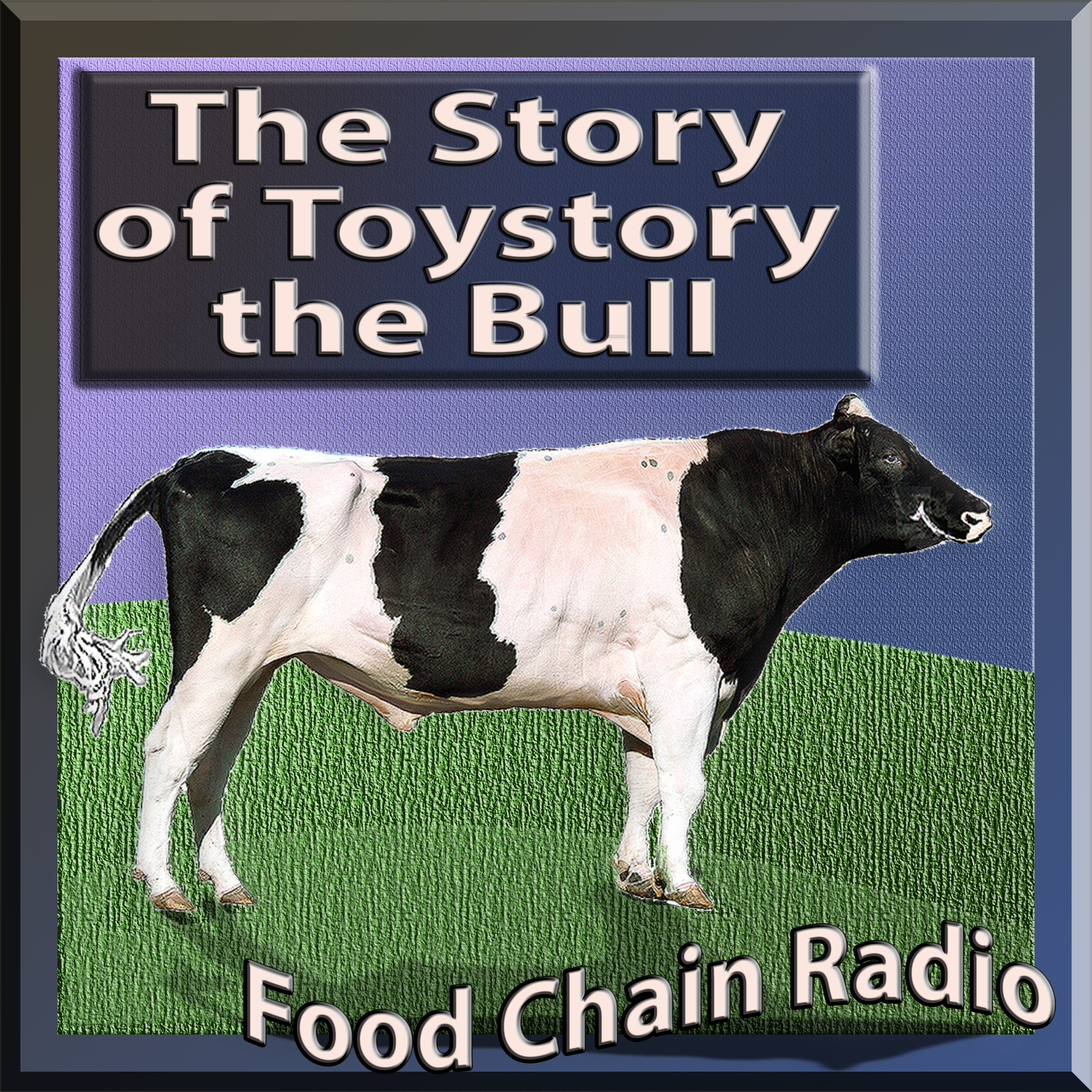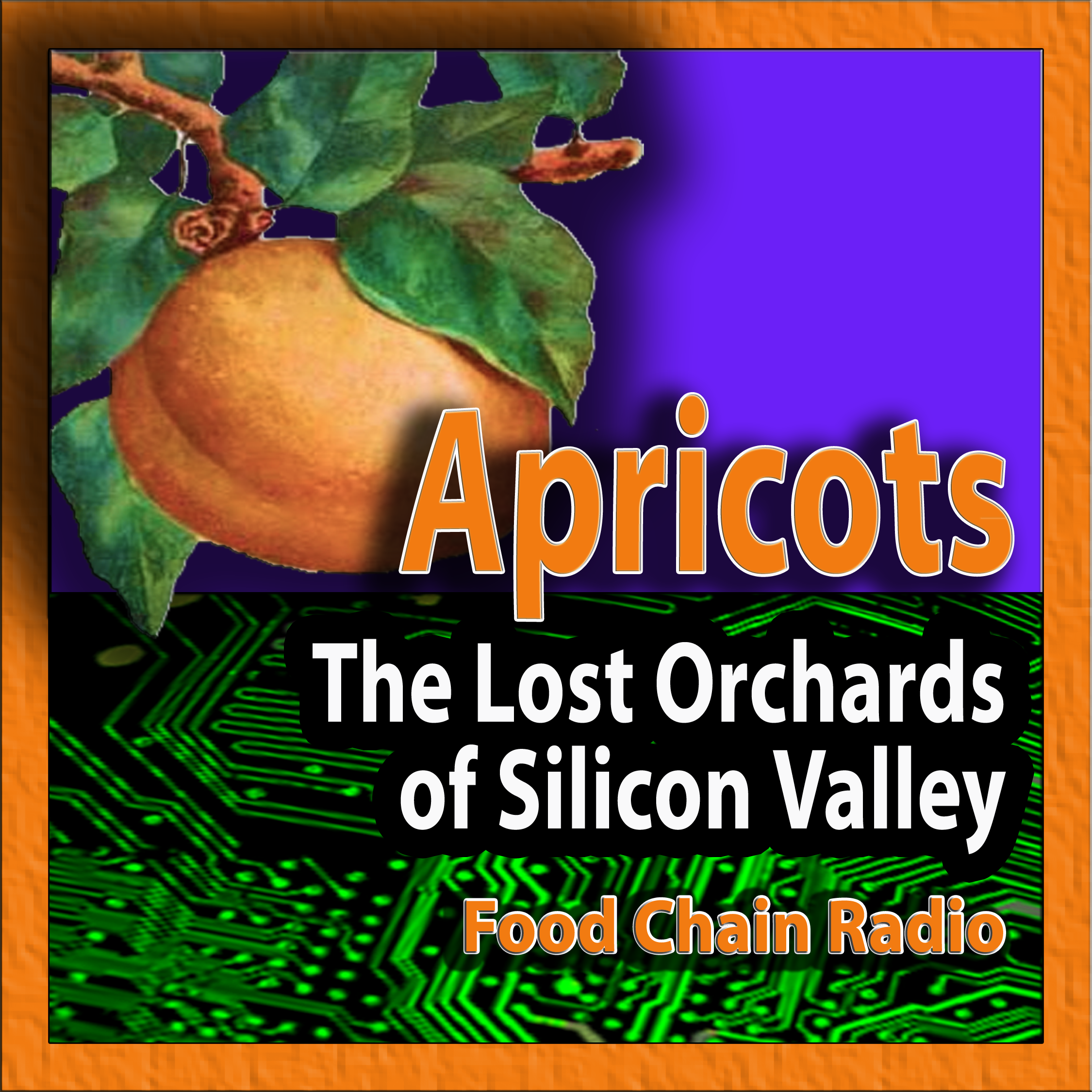
Toystory the Bull
April 23, 2015
Glyphosate and GMOs
May 7, 2015Food Chain Radio Show #1011
Michael Olson, Author & Urban Farming Agriculturalist
Silicon Valley – From Apricots to Apple Inc
Guest: Robin Chapman, Author
California Apricots ~ The Lost Orchards of Silicon Valley
Looking way back to the farmers at the confluence of the Tigris and Euphrates Rivers, the Nile Delta and the Urubamba River Valley, its easy to conclude civilization begins with the production of a surplus of food.
Equally obvious is the fact that the best farmland grows the most productive cities.
And so, like rampant bacteria, U.S. cities eat up an acre of prime U.S. farmland every minute. In the past few decades, those cities consumed well over 23 million acres of prime farmland.
Perhaps no place reflects the voracity of hungry cities like the Santa Clara Valley, which once supported thousands of acres of bountiful fruit and nut trees. In a few short years, Santa Clara now supports office complexes renting for upwards of $100 per square foot.
The incredible transition from apricot farms to Apple Inc leads us to ask…
Where will we grow food when all the farmland has been paved into city?
Tune in here, for the syndicated Food Chain Radio Show #1011 May 2, 2015 Saturday 9AM Pacific





2 Comments
A very good point. I farm some of the richest soil in the world here in urban silicon valley. In 1918 an intentional community called the Weeks Poultry Community existed. Their motto “One acre and independence” only lasted till the depression. I like to remind people I am one of the last growth industries in the valley producing a real, not virtual product.
Unfortunately, producing a product that can support the million dollar an acre land price is impossible. I have managed for the last 40 years to survive as a steward of a few small lots in my neighborhood and by producing products that are unique. Far from becoming the “Steve Jobs” uber rich, I still struggle to find the space, water, and products to survive. I have an established clientele who understand why my prices are not competitive with comercial truck farming and wholesale produce which keeps me going but getting a loan or a fair price for surplus product is a battle.
Changing topics.
It is time citys take aquifer recharge seriously. We cannot afford to gutter the thousands of acre feet of water falling on asphalt.
Though I am probably the only surviving agricultural business, there is room for more if cities and water treatment plant start to charge real market rates for treatment runoff management. Rainwater retention plans must become a requirement of any new coverage and retro-fitting all large acreage coverages like freeways and parking lots would bring millions of acre feet into our control. Leachfield recharge systems or retention reuse plans could include and incentivise urban farming Roofs of malls and their ajoining parking lots guttering millions of gallons of valuable rainwater end up contaminating our few streams. Without a holistic approach to urban water management that includes urban ag, all CA farming and cities will end up paying a much higher price.
David…
Thank you for your comments, and for your service in growing real food for the community. And yes, it really is difficult for a farmer to compete for resources with industrial businesses paying upwards of $100 per square foot for their office space, as they are in Silicon Valley. Still, those officer workers must eat, and someday soon they will come to realize what they have been eating, and turn to you for your real food. Then you will be able compete.
Michael Olson….